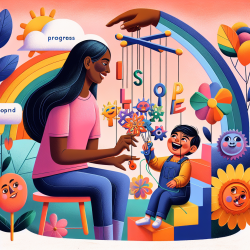Introduction
Rett Syndrome (RTT) is a rare neurodevelopmental disorder primarily affecting females, characterized by severe dyspraxia, hand stereotypies, and sensory processing issues. Despite the challenges, recent research offers hope through Ayres Sensory Integration (ASI) Therapy. This blog explores how ASI can enhance participation and motor skills in children with RTT, based on a detailed case study analysis.
Understanding Ayres Sensory Integration Therapy
Ayres Sensory Integration Therapy is a specialized intervention designed to help children with sensory processing disorders. It involves active engagement in a sensory-rich environment, promoting adaptive responses and neuroplastic changes. For children with RTT, ASI therapy is tailored to address their unique sensory and motor challenges.
Key Findings from the Case Study
The case study focused on an 8-year-old girl with classic RTT, who underwent 36 ASI therapy sessions. The analysis revealed several strategies that facilitated her participation and motor skill development:
- Lateral Movement Activities: These helped develop weight-shifting and bilateral coordination, crucial for improving motor skills.
- Rotary Play: Engaging in rotary play increased trunk rotation, enhancing postural transitions and reducing gravitational insecurity.
- Rhythmic Cues: Using rhythmic sensory input, such as voice and movement cues, supported the continuation of movements and improved motor planning.
Strategies for Practitioners
Practitioners can enhance their skills by incorporating the following strategies into their ASI sessions:
- Incorporate Neurodevelopmental Treatment (NDT): Use NDT techniques to facilitate active movement and improve motor learning.
- Document Subtle Changes: Record specific cues and levels of assistance needed to detect small but meaningful improvements in motor skills and participation.
- Provide Meaningful Play Experiences: Use preferred sensory activities to motivate children and encourage active participation.
Encouraging Further Research
While the case study provides valuable insights, further research is needed to establish the efficacy of ASI therapy for a broader population of children with RTT. Practitioners are encouraged to explore this area, contributing to a growing body of evidence that supports innovative therapeutic approaches.
Conclusion
The case study highlights the potential of ASI therapy in improving participation and motor skills in children with RTT. By incorporating data-driven strategies and documenting subtle changes, practitioners can create more effective therapy sessions. This approach not only enhances outcomes for children but also contributes to the broader understanding of ASI therapy's impact on RTT.
To read the original research paper, please follow this link: Ayres Sensory Integration Therapy for a Child With Rett Syndrome: A Case Report.










